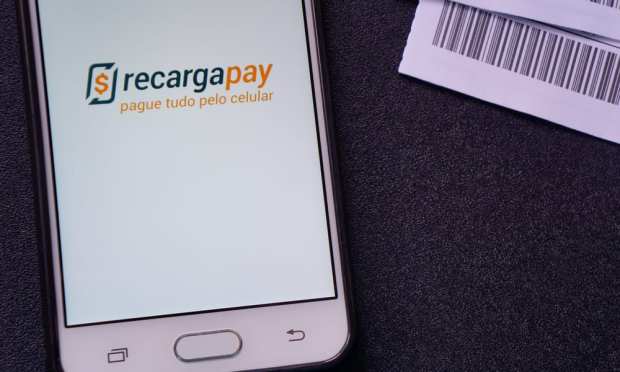RecargaPay: From Mobile Top-Ups To Mobile Financial Services Ecosystem

A decade ago, when Brazil’s RecargaPay first debuted, a glance around the global payments ecosystem would have shown a similar pattern. The world’s largest digital payment companies at the time — PayPal and Alipay — got their start inside of marketplaces, RecargaPay Founder and CEO Rodrigo Teijeiro told Karen Webster in a recent conversation. In addition to solving real frictions for the buyers and sellers on the platform, it also had the added advantage of building up critical mass on the consumer side of their platforms.
For RecargaPay, the path to building its digital payments network wasn’t that straightforward as there was no well-developed marketplace. But there was no less friction associated with consumers making payments for essential services — mobile top-ups, bill payments, everyday purchases, Teijeiro told Webster, and very cash-based.
So, Teijeiro said that their path to enabling digital payments started with removing the friction associated with something everyone in Brazil needed to do: top up their prepaid mobile phones.
And with 600 million people in Latin America and 500 million prepaid phones, that was a lot of friction, and a market problem large enough for Teijerio and his team to solve and scale.
“All those [consumers] would have to go outside of their home to search for a small shop or a supermarket where they could pay cash for a top-off even though they were buying a digital good,” Teijeiro said. “So, it was just like a no-brainer that this should have a solution in a digital form. That form, when we started it, was just a website.”
But today, RecargaPay is a lot more than “just a website” that consumers can use to top off their phones. Teijeiro said the goal is to democratize financial services for Brazilian consumers — banked and unbanked — so that they can transact what they want, when they want to and with whom, all using whatever payment method best suits their needs at the moment.
From Top-Ups To A Full Financial-Services Ecosystem
Teijeiro said finding a digital solution for mobile top-offs was mostly an open field when RecargaPay got into the game a decade ago. There was a reason for that: creating a secure, compliant system was difficult and the margins weren’t that rich. Most entrepreneurs walked away.
“Nobody was addressing this exactly because it was just very, very bad in the sense of complexity and margin,” he said. “But the demand [was] clearly there — people were searching it on Google. Even today, 10 years in, it’s a significant driver of user acquisition.”
Teijeiro said the key to making the business work involved having the correct know your customer (KYC) in place and keeping the chargeback ratio low. And the only way to pull that off was to become a full-blown payments company connected directly to telcos, with RecargaPay’s tech stack sitting in the middle.
From there, RecargaPay began looking for other pain points where there should have been a digital-payment option but wasn’t — buying public-transportation passes, tapping credit cards to pay bills and more.
RecargaPay hopes to link all the essential payments consumers do each month — paying their bills, riding public transportation, buying parking or gift cards. “Once you have all that transactional history of people and users, you can start catering to their needs for financial services — paying in installments, getting microloans and things of that sort,” Teijerio said. “I’m a big believer that through payments, you can be on top of operating a lot of financial services.”
Four years ago, 90 percent of its revenue came from mobile top-ups, but today, that’s less than 10 percent of the business.
At the same time, 80 percent of the firm’s revenue once came from commissions from telcos, utility firms or transportation providers. But as of today, commissions are only 20 percent of revenue, Teijeiro said.
The remaining revenue comes from the financial services that the firm offers. “We really transformed the business from a very specific use case of mobile top-ups into a full-blown payments bank,” he said.
The Continuing Transformation
But Teijeiro said that transformation is, in some ways, still in progress as the world adjusts to rapid digitization in the global pandemic’s wake.
When the company looks at the roadmap of what’s coming next, it sees Pix — the Brazilian government’s new instant-payments platform — as just the opportunity that will allow the company’s millions of users to leverage their RecargaPay wallets. Customers will be able to use their wallets at any place where a new generic QR code the government is launching is found. That will be a very meaningful expansion path for RecargaPay’s digital wallet, Teijeiro said.
He said the company will also continue to add specific Brazilian verticals that should have already yet stepped into the digital world, but haven’t.
For instance, Teijeiro said Brazilian gas stations represent one area of particular focus because 90 percent of them aren’t currently connected to any digital payments network. In Brazil, like mobile prepaid top-ups, filling propane gas tanks is something that everyone has to do.
He added that RecargaPay would continue expanding the range of financial services it offers customers, like lending, which would otherwise be hard to come by for some Brazilians, 60 million of whom are completely unbanked, not to mention the tens of millions more who are underbanked. So far, he noted, they’ve been able to extend over 1 million micro-loans in the last year.
“And this is something that we’re going to be extending rather largely in the next couple of quarters, as it has worked incredibly well,” Teijeiro noted
Teijeiro believes that what Brazil needs in terms of financial services are more solutions for the day-in/day-out use cases that consumers often find involve fumbling through unexpected friction. Fighting that friction, he said, requires finding where the system is currently failing the consumers, and building an access point where there was none.